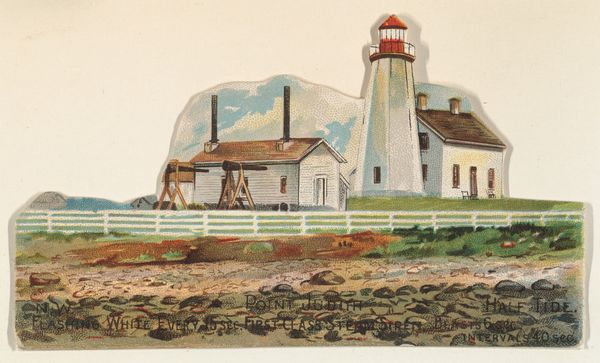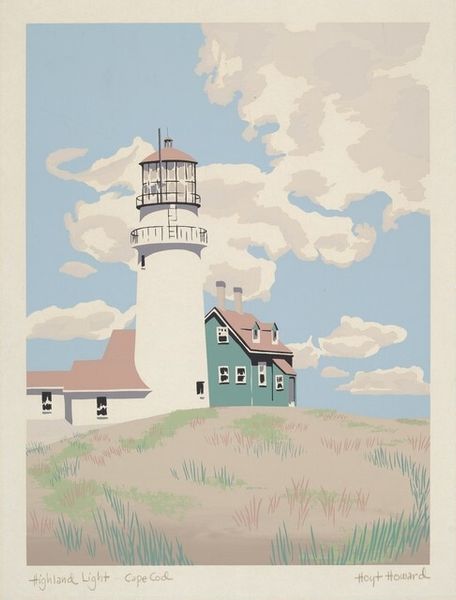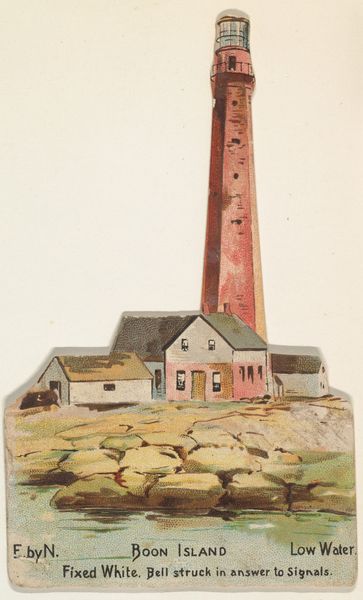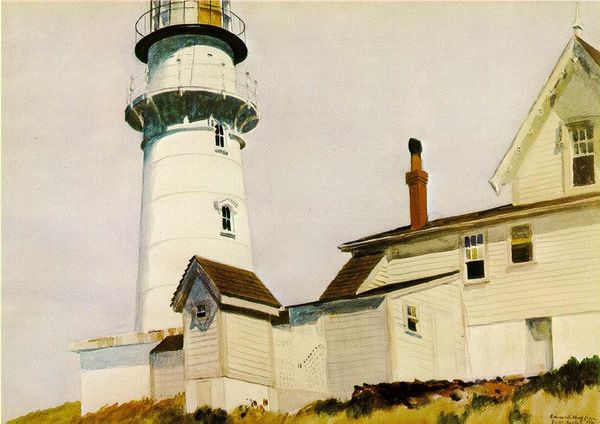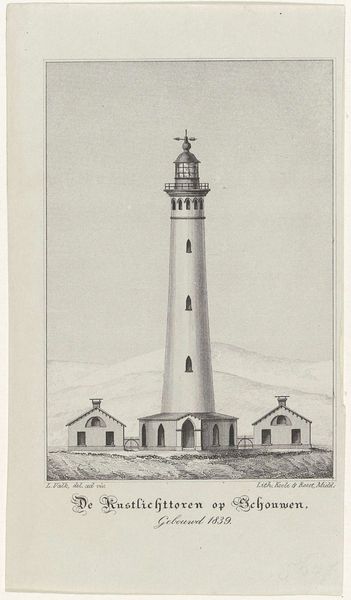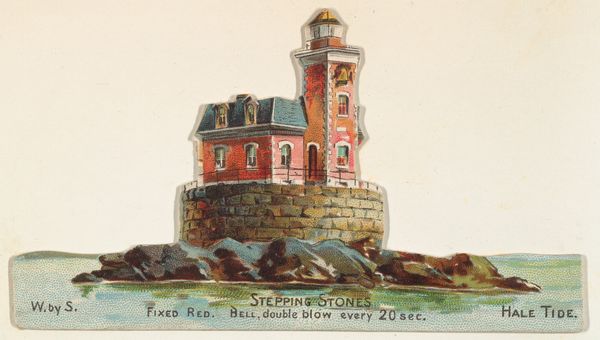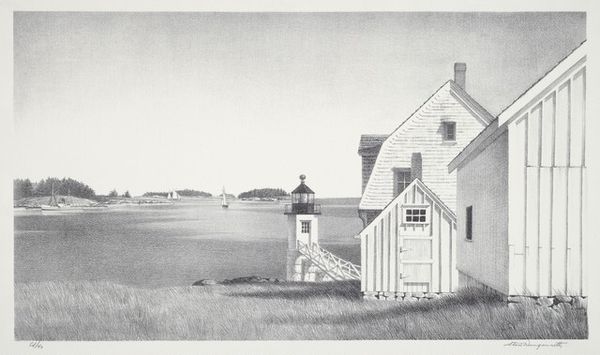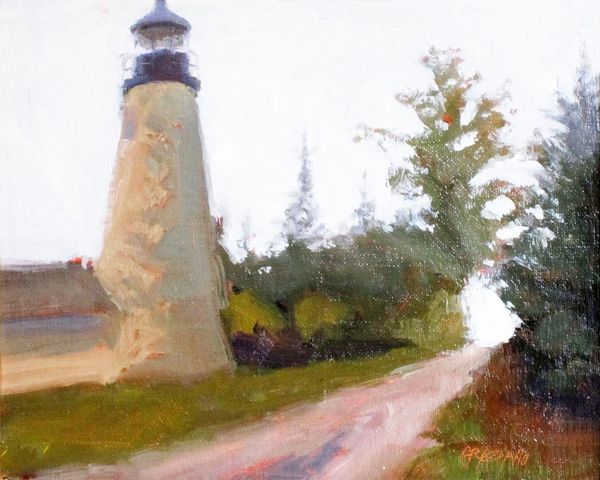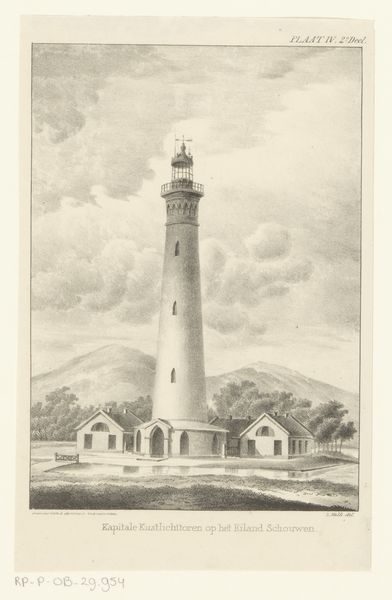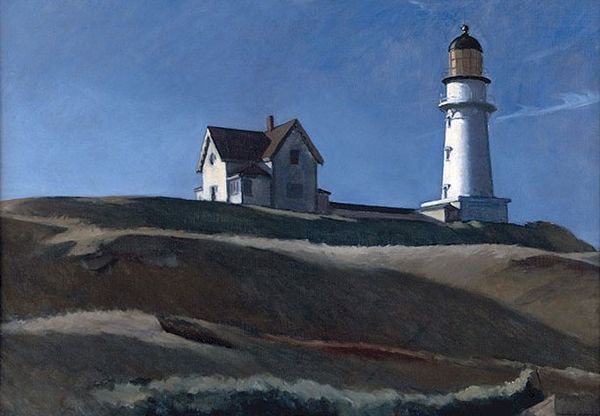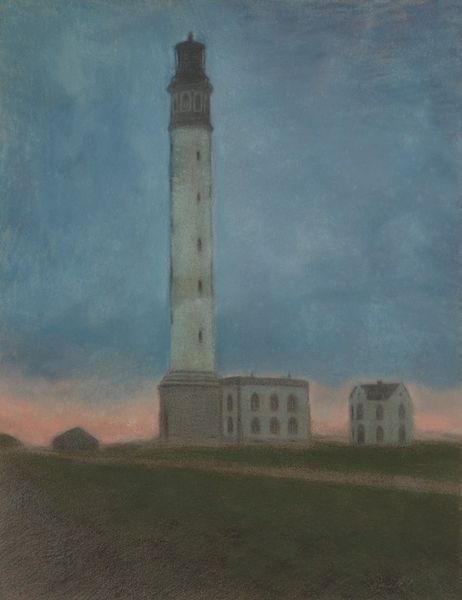
Cape Cod, from the Lighthouses series (N119) issued by Duke Sons & Co. to promote Honest Long Cut Tobacco 1889
0:00
0:00
print, plein-air, photography, watercolor
#
water colours
# print
#
impressionism
#
plein-air
#
landscape
#
photography
#
watercolor
Dimensions: Sheet (Irregular): 2 3/8 × 4 1/16 in. (6.1 × 10.3 cm)
Copyright: Public Domain
Curator: Here we have a rather curious artifact: "Cape Cod, from the Lighthouses series (N119)", dating back to 1889. It was produced by W. Duke, Sons & Co. as a promotional item for their Honest Long Cut Tobacco. Editor: It's oddly charming, in a naive sort of way. The stark lighthouse dominates, casting a long, somewhat smudged shadow, juxtaposed against the quaint, miniature houses. The watercolors evoke a misty coastal feel. Curator: Precisely. Note the strategic arrangement: The lighthouse is not merely a backdrop but a primary formal element, its verticality anchoring the composition, offsetting the horizontality of the land and buildings. Observe, too, the tonal contrasts between the white tower and the warmer hues of the landscape, creating visual interest and depth. Editor: What interests me more is its genesis as tobacco advertising. Who crafted these images, and under what conditions? The choice of watercolor suggests a desire for 'high art' legitimacy, yet it functions as disposable ephemera tied to the product, the industry and labor involved in tobacco production—a far cry from romantic coastal scenery. Curator: Indeed, its dual nature creates a fascinating tension. While the work does contain a certain formal harmony, one should recognize that the overt symbolism serves a didactic, persuasive end. Editor: I think understanding the distribution chain – from artist to lithographer to factory worker to consumer – gives us a more nuanced grasp of late 19th-century visual and material culture than any formal analysis alone could. The seaside imagery speaks to the turn-of-the-century anxieties surrounding industrialization and urbanization. Curator: I see your point about the broader social context. However, one must not dismiss the deliberate aesthetic decisions made by the artist – the subtle color gradations, the play of light and shadow – all contributing to the work's visual impact. Editor: Certainly, a useful lens for understanding consumer culture. Curator: Agreed. In that sense, our contrasting perspectives bring valuable insight to how art speaks its many meanings, both then and now.
Comments
No comments
Be the first to comment and join the conversation on the ultimate creative platform.

